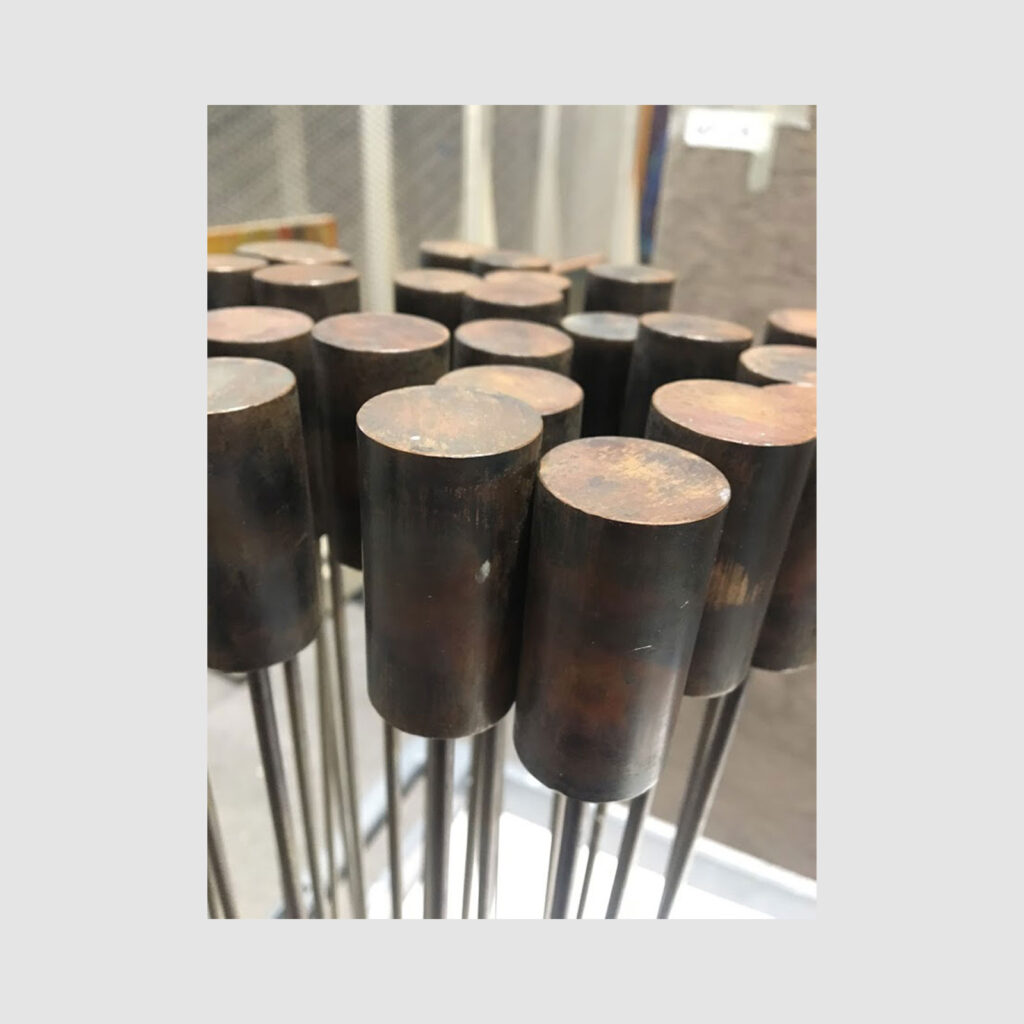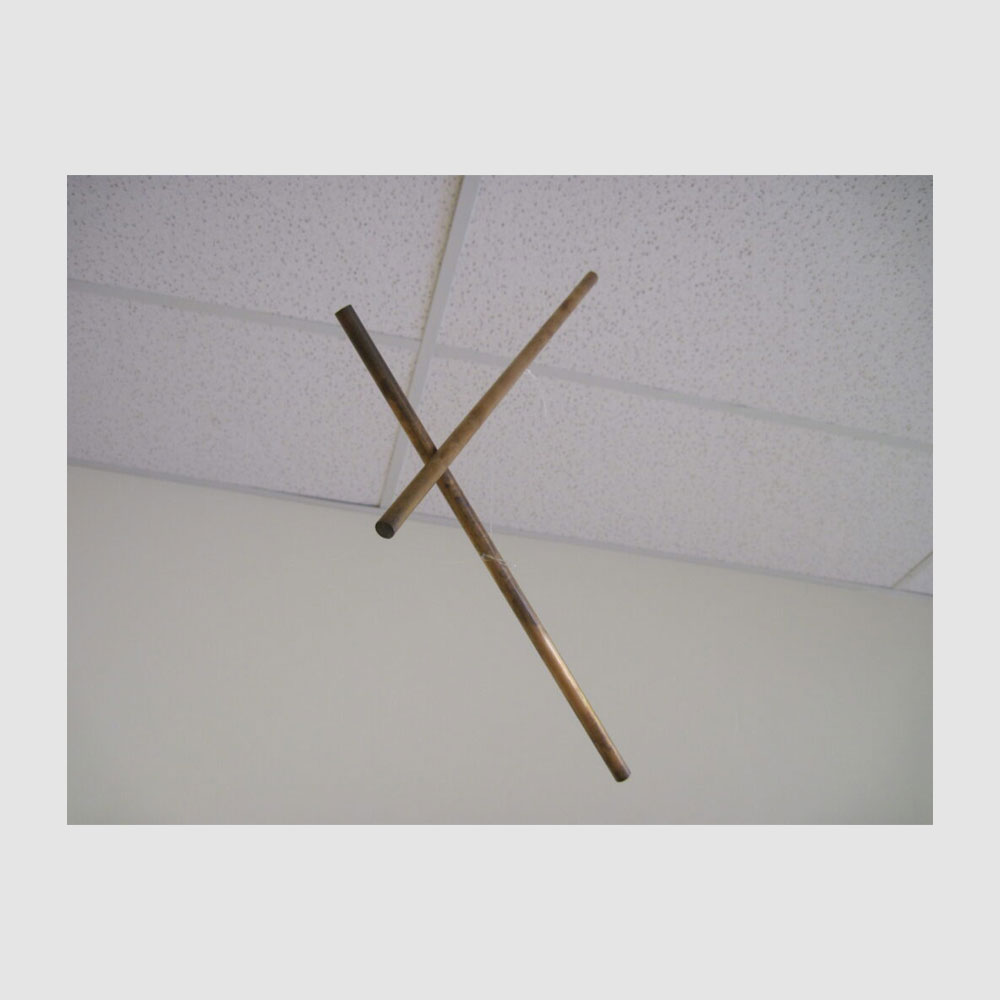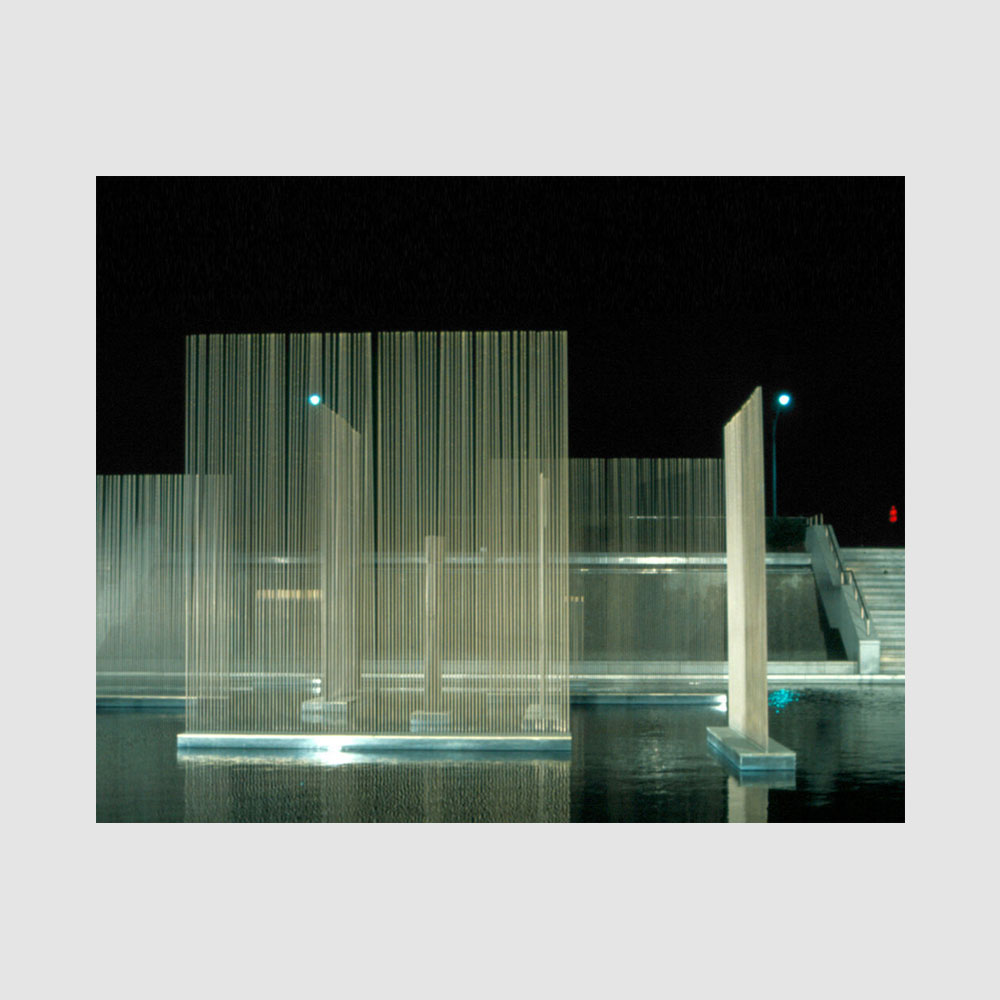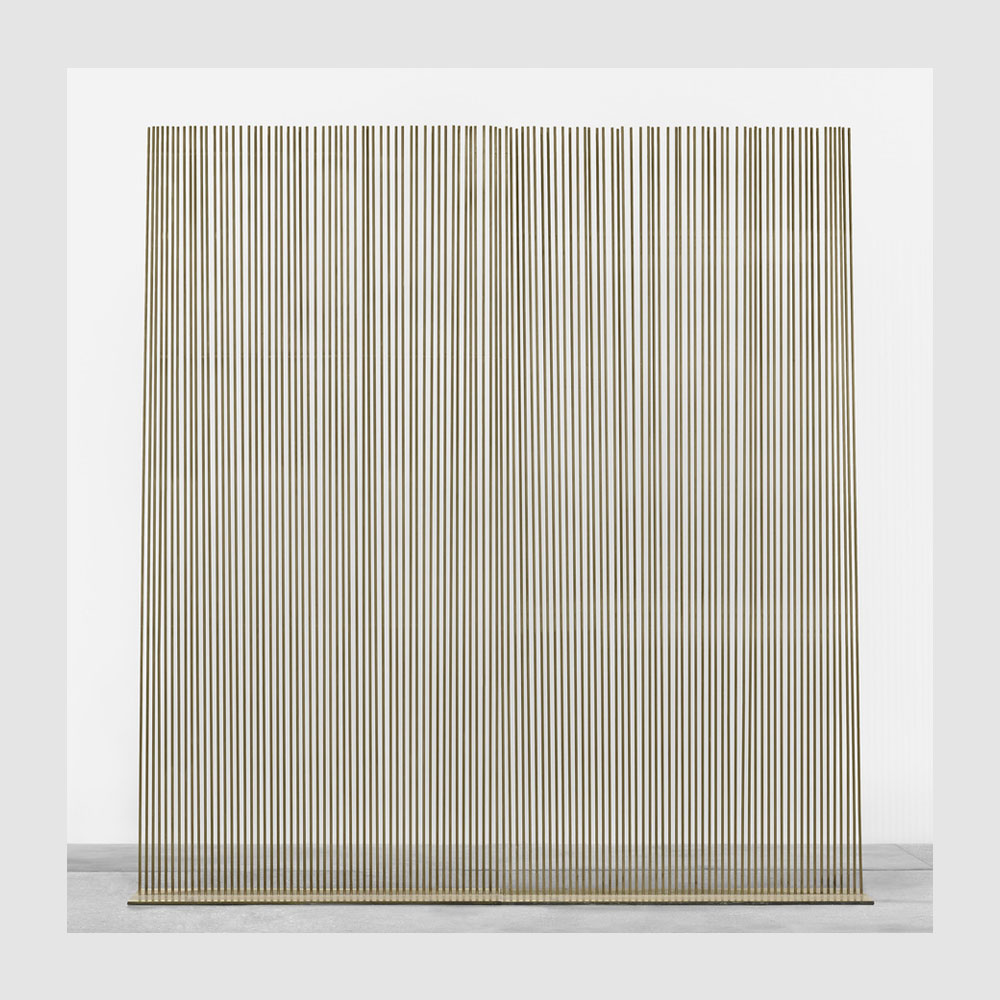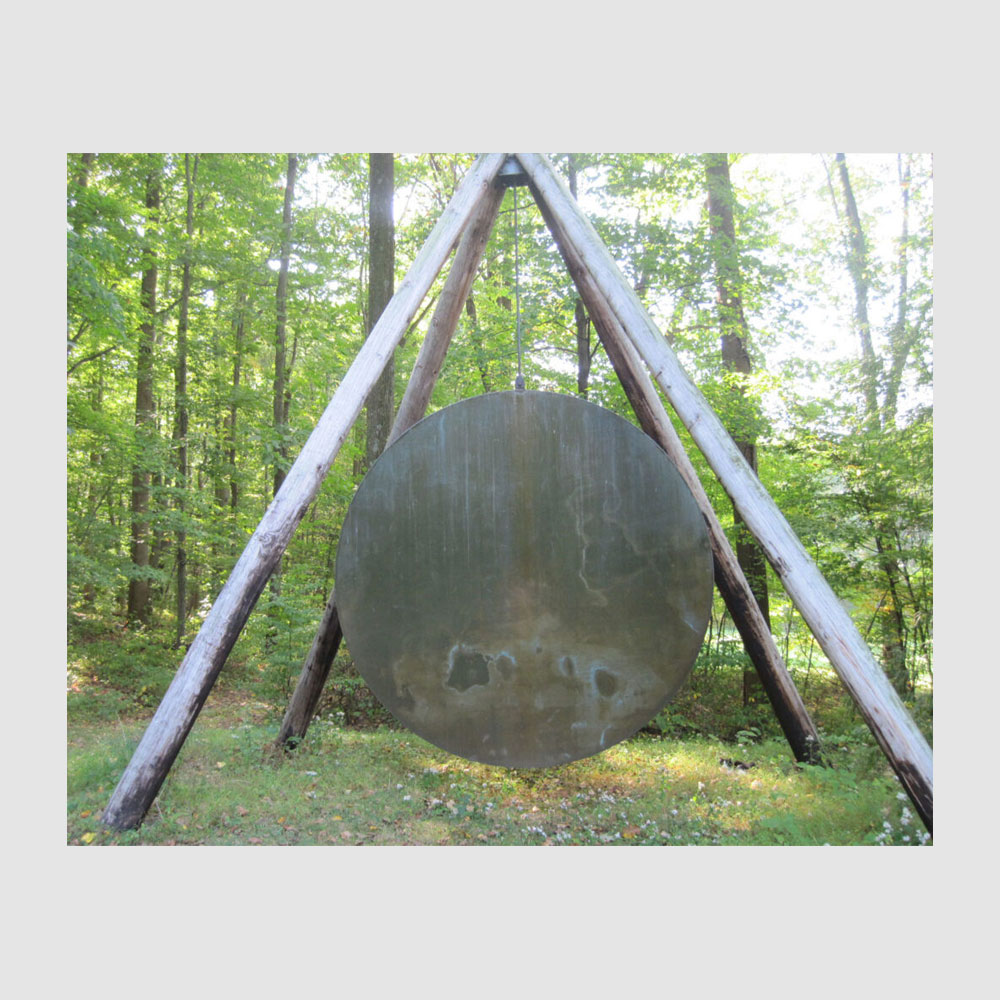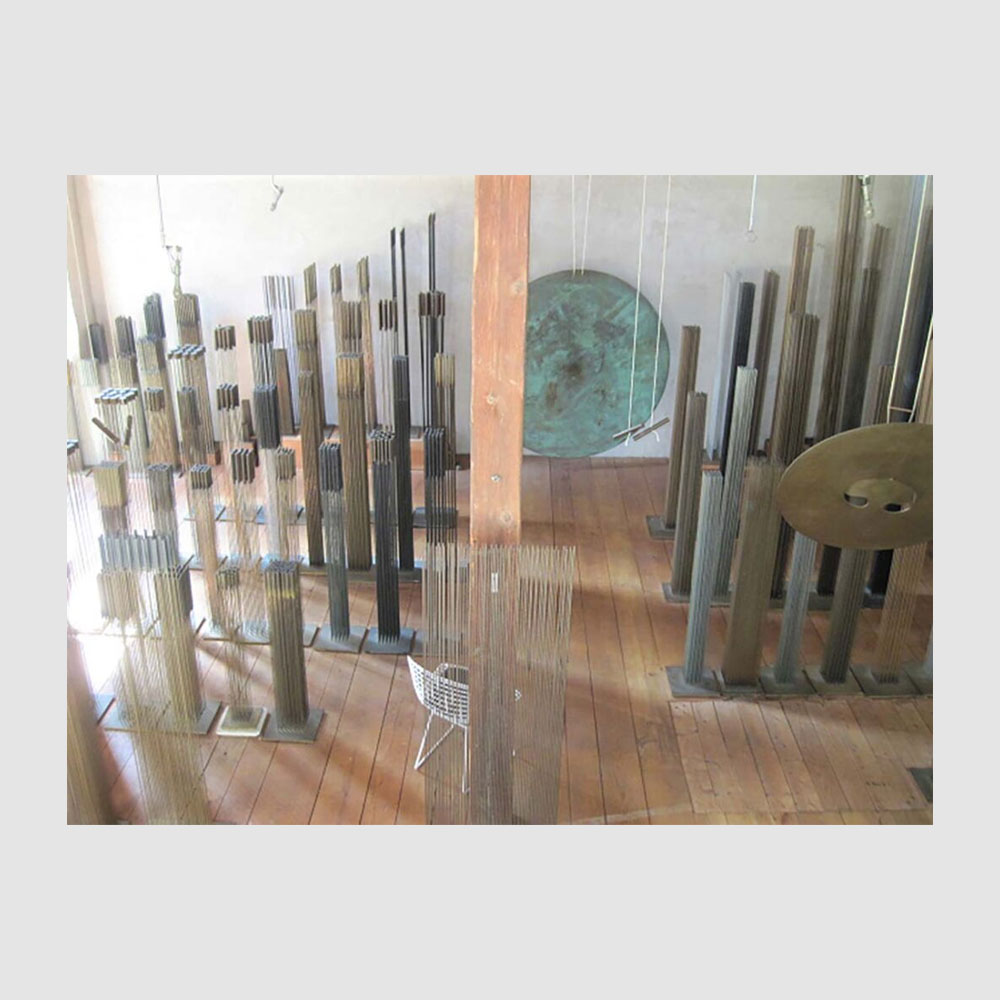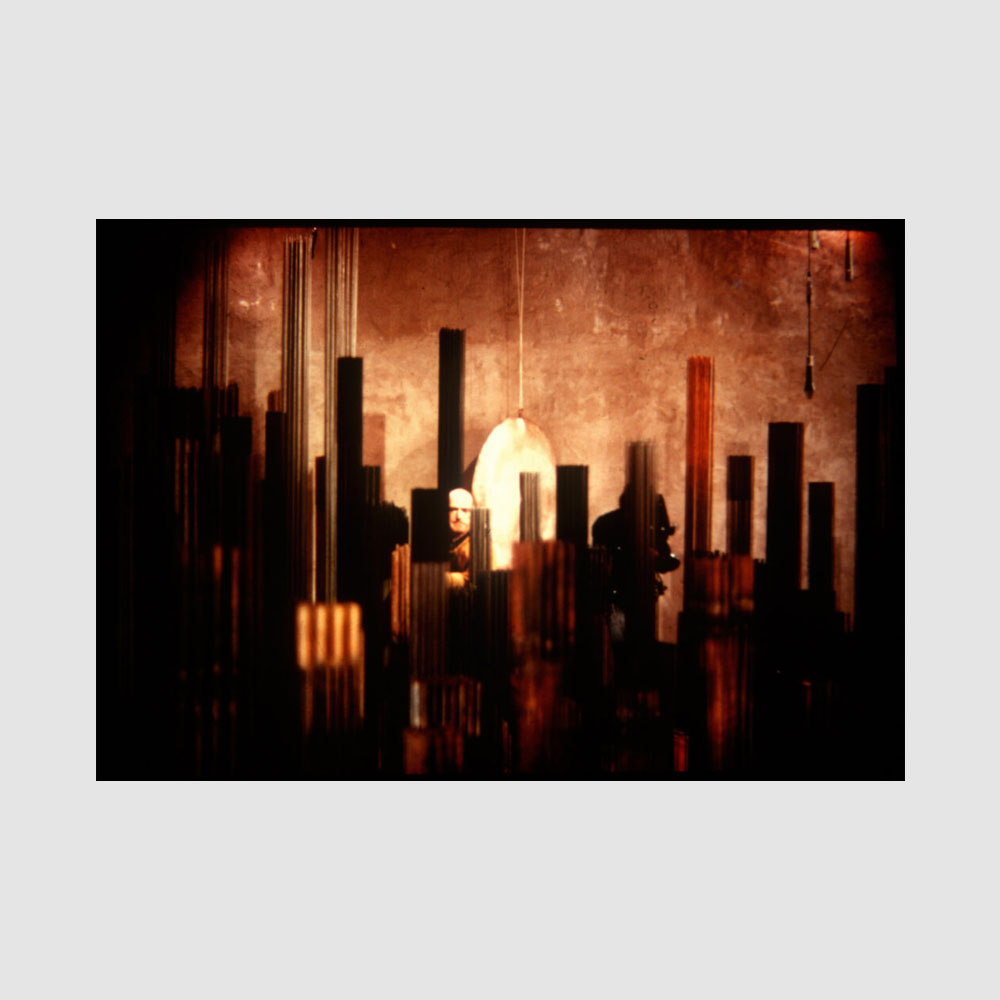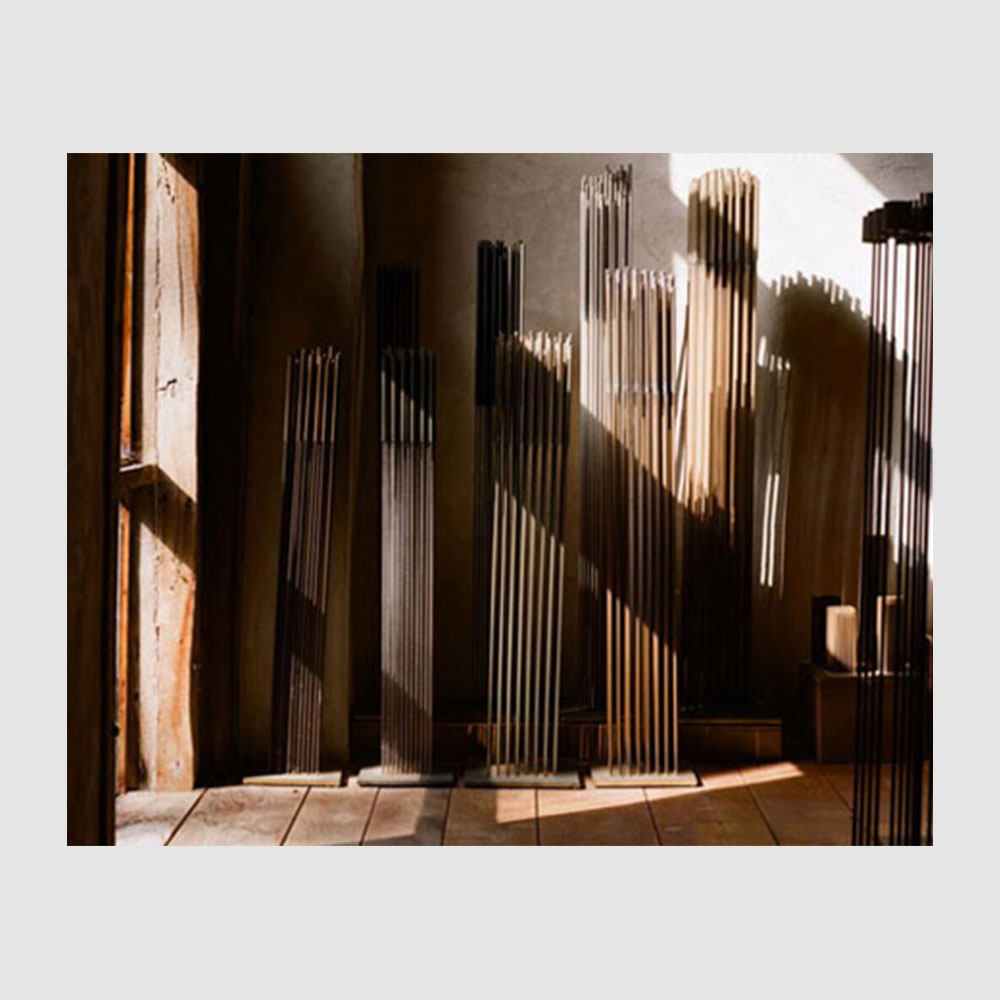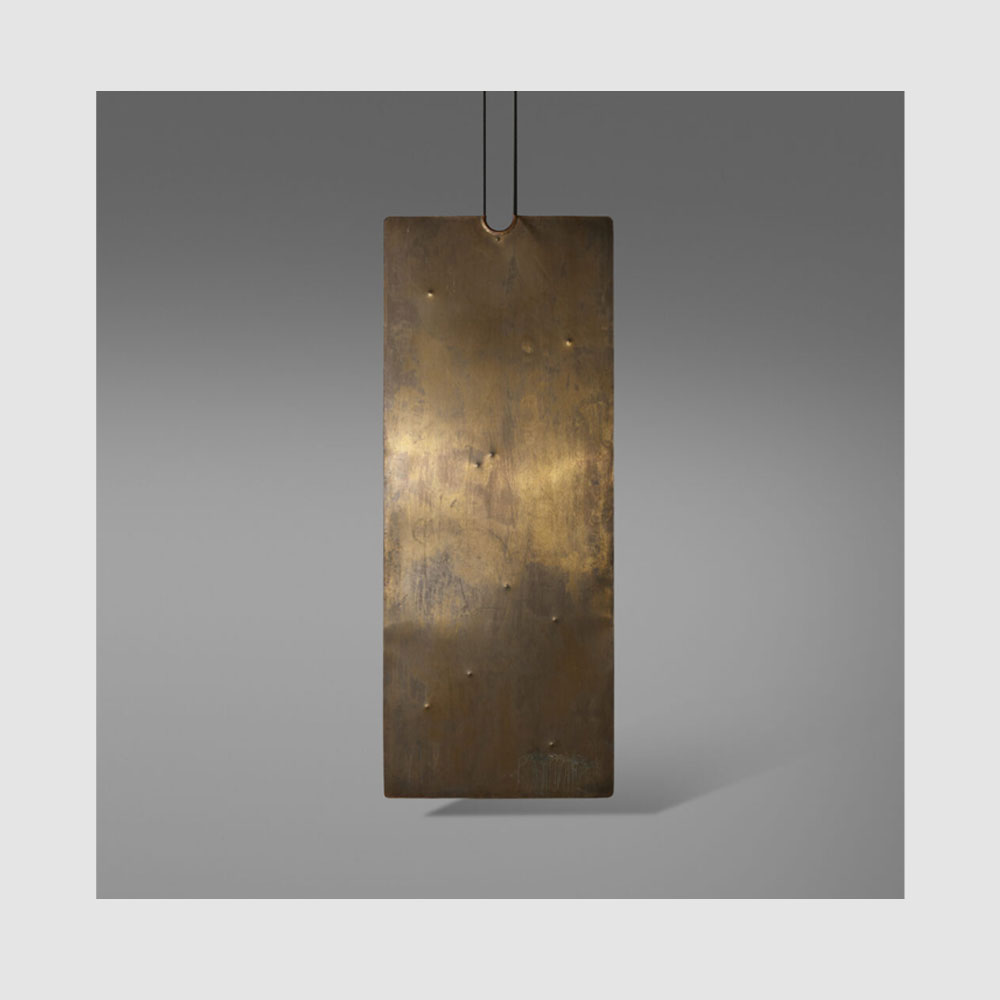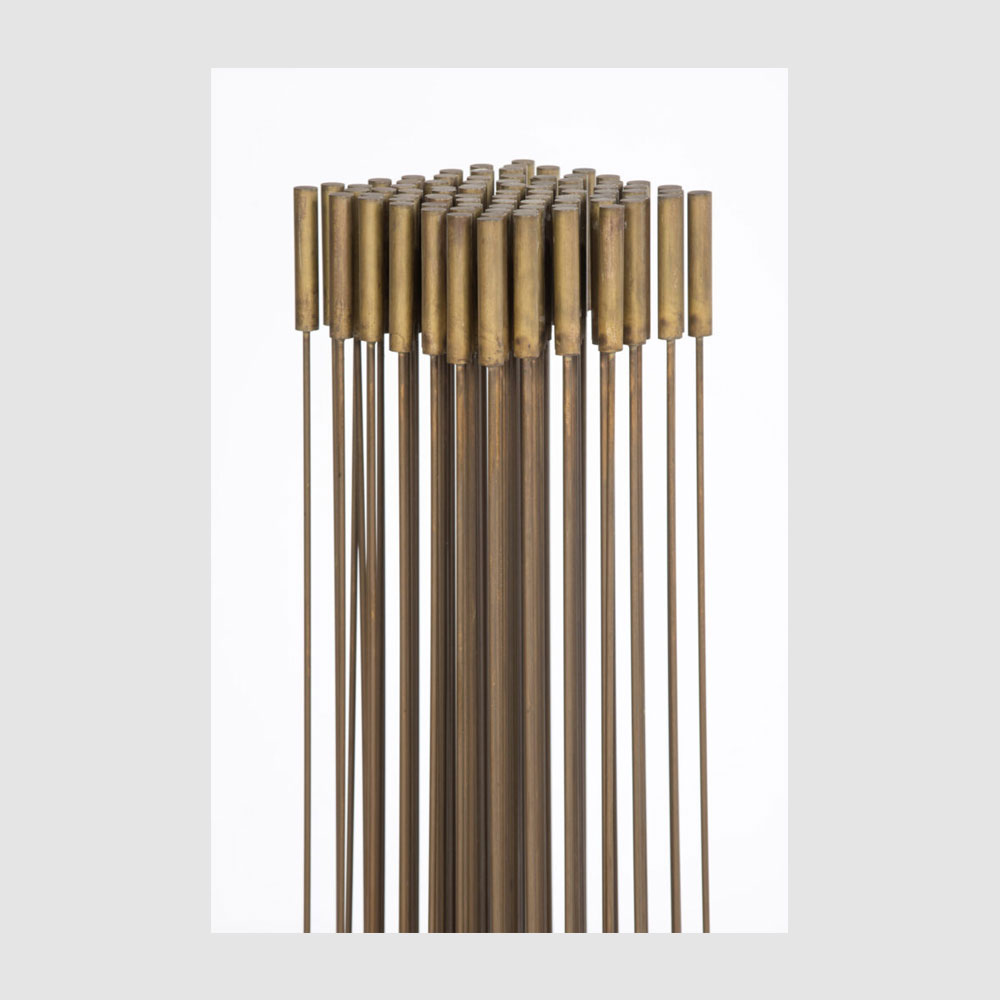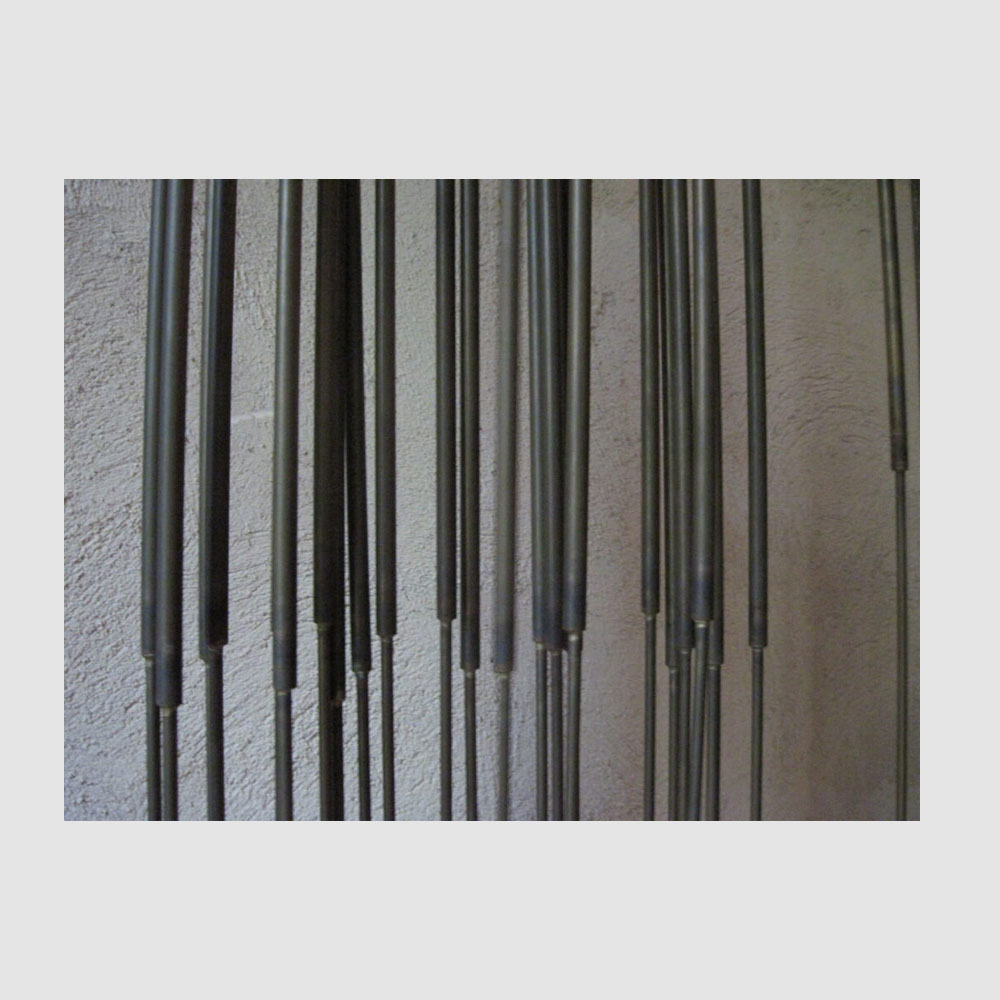Though Sonambient works can technically be grouped with Bertoia’s other sculptures, these works ultimately represent a distinct part of his creative practice. These three-dimensional objects were created to generate sound, and have aesthetic, sonic, and kinetic properties.
Bertoia created his first prototype sounding sculptures in early 1960. These tonal sculptures started with a complex grid wire base, which by the mid 1960s morphed into a flat, drilled metal base for vertical rods. Rods were placed in rows and grouped into rectangular or circular grids; loose at the top, the rods were made in a variety of shapes and produced a variety of sounds. Materials for the tonal sculptures included brass, bronze, beryllium copper, aluminum, monel, Inconel, and occasional gold plating. Gongs and singing bars of varying lengths came in the mid 1970s to round out the Sonambient orchestra.
Except for an edition of fifty tonals created in 1977, every sounding sculpture Bertoia made is unique. Thousands of sounding sculptures, ranging from six inches to twenty feet, produce all kinds of tones; he created different sounds and visual forms by varying the type of metal, configuration of rods, or overall sculptural shape. With the help of his musically inclined brother Oreste, Bertoia recorded these sounds in his home studio barn in the 1970s.
Numerous recordings of the sounding sculptures were made, and eleven Sonambient LPs are available as CDs and digital files. Jeffrey and Miriam Eger also made a film titled Sonambients in 1971. Shot over the course of two days in February, the short documentary features Bertoia playing his sculptures in the barn and his reflections on the origins of the Sonambient works. Most recently the Nasher Sculpture Center in Dallas brought together a dozen world-renowned improvisers to explore the expressive range of Harry Bertoia’s Sonambient sound sculptures. Each concert was dedicated to a particular instrument or instrument grouping, placing two musicians in dialogue with Bertoia’s works.

